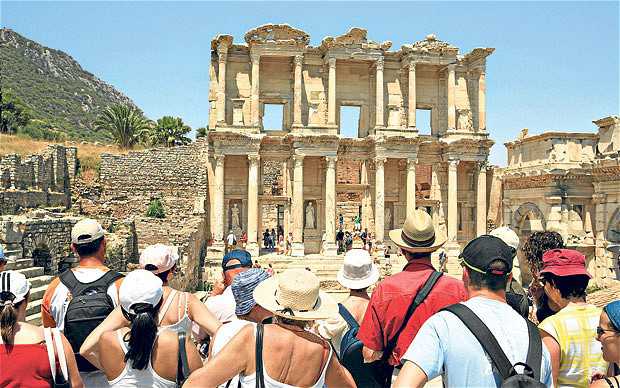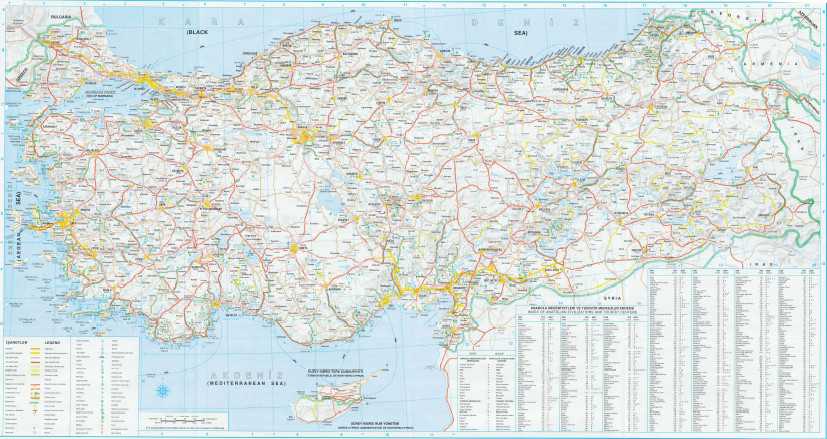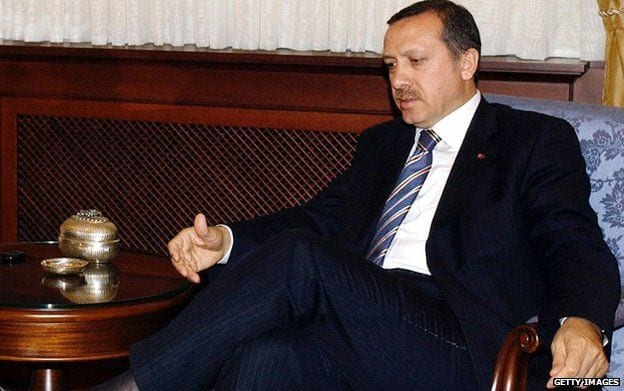
1. Pulat Tacar has been Co-Chairperson of the Turkish National Commission for UNESCO (1995–2006); he was Ambassador of Turkey to UNESCO (1989–1995), Ambassador of Turkey to the European Communities (1984–1987) and to Jakarta (1981–1984). He is a mamber of Turkish Forum Advisory board within the last 15 years, He is the author of many books and articles. Email: tacarps@gmail.com.

2. Maxime Gauin is a researcher at the International Strategic Research Organization (USAK, Ankara) and a PhD candidate at the Middle East Technical University, He is writer of Turkish Forum within the last 6 years, Email:gauin.maxime@wanadoo.fr.
***
Introduction
We have been asked by the European Journal of International Law to write a reply to an article entitled ‘State Identity, Continuity and Responsibility: The Ottoman Empire, the Republic of Turkey and the Armenian Genocide’. The article accuses Turkey of ‘practising a denialist policy’ with regard to ‘the act of genocide committed during 1915–1916’, demanding that it ‘make itself responsible for its own internationally wrongful acts committed against Armenians and other Christian minorities’, and also accuses it of ‘expanding the massacres beyond its borders into the Caucasus and the territories of the independent Republic of Armenia’. According to the same article, there is a state succession and continuation of responsibility from the Ottoman Empire to the Turkish Republic, and the Republic must assume full responsibility for and should also repair the injury caused by the Ottoman Empire.
The Armenian question is especially sensitive, among other reasons because of the long accumulation of prejudices against Turks,1 Armenian terrorism in 1973–1991,2 the Armenian invasion and occupation of western Azerbaijan since 1992,3 and more recently the virulent anti-Turkish stance of Anders Breivik in his manifesto4 and the various campaigns or attacks by Armenian nationalists.5 Instead of easing the tensions, the article fuels them through the provocative,6 defaming,7irredentist8 remarks of its author who harbours in his writings the colours of a political pamphleteer.
On this sensitive issue our main objective is to restore much-needed understanding and fair as well as reconciliatory dialogue between the Armenian and Turkish people and all interested parties, including scholars.9
‘The right to truth’ encompasses all aspects of the truth and all the pages of history; in short, ‘a just memory’. Thus, initiatives for dialogue between those who defend different views should be promoted. In this respect, the creation of joint commissions provided for by the protocols between Armenia and Turkey will no doubt serve the cause of reconciliation, even if parties to the conflict insist on highlighting their views on the different aspects of ‘their truth’. We believe, like the French philosopher Paul Ricoeur, that history is not frozen or rigid forever, that assessments categorized as historical truth cannot be conclusive, and that assertions relating to historical knowledge develop. Consequently, research into history is continuous.
Paul Ricoeur,10 who has received international recognition with his book titled Memory, History, Forgetting, criticized the concept of ‘collective memory’ and pointed out that some ideologies have been formed under the auspices of this concept concerning the warning – frequently recalled by local and foreign scholars or politicians – about ‘completing the task of memory’. Ricoeur emphasized that it is not the ‘task of memory’ but a ‘study of memory’ processes that should be developed in our minds. He further stated that discussions around ‘rightful memory’ create a difficult picture for those who are forced somewhere to remember their sorrows obsessively, and who may somewhere else equally face the position of those who tend to put completely out of their minds that conviction and punishment are the task of judges. Citizens must resist ‘forgetting’ and at the same time should possess a ‘just memory’. The task of the historian is not to accuse or exculpate, but to understand; the ‘study of memory’ is open to improvement and its feature of défamiliarization 11 outweighs the task of memory.
As we address our comments to EJIL, we intend to focus mainly on the international law aspects of the question.
Previous SectionNext Section
1 Why Turkey does not Qualify the Tragic Events of 1915–1916 as Genocide
A 1948 United Nations Convention on the Prevention and Punishment of the Crime of Genocide
The main charge by the author is that Turkey refuses to recognize the 1915–1916 Armenian genocide. Let us examine whether such an accusation is legally sustainable. ‘The concept of the “Armenian genocide” is being used in a historical and political rather than in a legal perspective. It has become a catchword which reveals deep scars in the Armenian collective memory. Learned legal discussions on the issue of genocidal intent are of little or no relevance to the perception by the Armenians of one of the most defining moments of their history.’12
The term ‘genocide’ is a legal term; it describes a crime specifically defined by the 1948 Genocide Convention and must be addressed accordingly. The existence of the crime of genocide can be legally determined only by the judges of a competent tribunal on the basis of the prescribed legal criteria and after a fair and impartial trial. The Genocide Convention does not allow for convictions on the grounds of genocide by legislatures, scholars, pamphleteers, politicians, or others. Some historians, sociologists, politicians, and even political scientists who deal with these issues tend to describe almost any incident which involves a significant number of dead13 as genocide; they sometimes purposely mislead those who are not familiar with the law; they created an ‘Armenian taboo’ and now they are prisoners of it.14 Indeed:
To term the events of 1915 as genocide is to detach genocide from its legal definition and to use it for political or moral purposes. Whether it is sound to keep hammering on a legal term based on non-legal considerations is doubtful … it adds to a wrong conceptualization of the legal system and eventually could lead to a devaluation of the norm itself.15
But Armenians and some of their supporters have deliberately set aside the legal aspects of the issue, because – they thought – it would weaken their genocide claims. They have chosen to adopt a dogmatic political approach to underline the tragic nature of the incidents so that they can make genocide claims more easily acceptable to the public.16
B Dolus specialis – Special Intent
The most important characteristic of the Genocide Convention is that for the crime of genocide to exist, acts must have been committed with the intent to destroy the protected groups as such. The mental or subjective element (mens rea) is a constituent of that crime. The concept of ‘general intent’, which is valid for ordinary crimes, is inadequate in the identification of acts of genocide.
Sociologically and psychologically, the intent ‘to destroy a group as such’ emerges in the most intensive stage of racism. Racial hatred is quite different from the ordinary animosity laced with anger, which parties engaged in a substantial dispute may feel towards one another. Racial hatred is a deeply pathological feeling or complicated fanaticism. Anti-Semitism is an example in this context.17
According to the Genocide Convention, the intent to destroy a group must be in the form of ‘special intent’, dolus specialis, beyond any doubt. This crucial aspect of the crime of genocide has been underlined by the International Court of Justice (ICJ) in paragraph 187 of its judgment inBosnia Herzegovina v. Serbia and Montenegro:18 the ICJ examined the allegations by Bosnia and Herzegovina and conducted long and detailed investigations regarding the alleged atrocities, the findings of which are grouped according to the categories of prohibited acts described in Article II of the Genocide Convention. With regard to killing members of the protected group, the Court found that massive killings throughout Bosnia and Herzegovina were perpetrated during the conflict. However, with the exception of Srebrenica, the Court was not convinced that those killings were accompanied by the specific intent on the part of the perpetrators to destroy the group of Bosnian Muslims in whole or in part. So, if the ‘special intent’ is not proven beyond all doubt, judicially an act cannot be qualified as genocide. The cases of civil war, rebellion, and mutual killings should not be confused with the crime of genocide.
C A Competent Tribunal to Judge the Genocidal Acts
Moreover, the existence of the crime of genocide must be decided upon by a competent tribunal. Article VI of the 1948 Genocide Convention reads as follows:
Persons charged with genocide or any of the other acts enumerated in article III shall be tried by a competent tribunal of the State in the territory of which the act was committed or by such international penal tribunal as may have jurisdiction with respect to those Contracting Parties which shall have accepted its jurisdiction.
The issue of a competent tribunal had been extensively debated by the International Preparatory Conference of the 1948 Genocide Convention. The question of determining a competent tribunal was resolved19 after lengthy discussion, and the above- mentioned text was approved. During the discussions, a proposal for ‘universal repression’ was rejected,20Universal repression allows the judging of the suspects by any tribunal of any state. Without a valid decision from a competent court, an act cannot legally be qualified as genocide.
The Turkish government and the overwhelming majority of Turks, as well as other governments21 and many scholars or experts, reject the qualifying of the tragic events of 1915 as genocide, because the legal conditions incorporated in the 1948 Genocide Convention which are asine qua non, especially the dolus specialis, the intent to destroy as such, were not fulfilled. We are of the opinion that the tragic events of 1915 may be labelled ‘criminal acts enumerated as such by the Ottoman Penal Code’. Furthermore, some of these events are described by many authors as inter-ethnic killings.22
On this occasion we would like to emphasize that the Minister of Foreign Affairs of Turkey, Mr Ahmet Davutoğlu, very clearly stated he was not insensitive to the sufferings of the Ottoman Armenians, but expected the same understanding from the Armenian side with regard to the plight of the Muslim Ottomans who equally suffered during the same tragic events.23 The Turkish government has more than once declared that it was ready to consider and eventually accept the conclusion of historians and legal experts who will meet to study the tragic events of 1915–1916; but Yerevan refused.24 Nevertheless, Ankara has since 2004 supported the Vienna platform, which in 2009 published a large compilation of documents.25 Turkey gave full access to its archives – unlike the Armenian Revolutionary Federation and the Armenian Patriarchate at Jerusalem – and, according to Dr Hilmar Kaiser, a supporter of the ‘Armenian genocide’ label, there is no evidence of deliberate destruction of Ottoman documents.26
D Other General Principles of International Criminal Law on Internationally Wrongful Acts
Those who refer to internationally wrongful acts in the context of the events of 1915 should also take into consideration the following principles of international law:
Previous SectionNext Section
1 Nulla crimen sine lege27 and Nulla poena sine lege28
The governing principles of criminal law are also valid for the crime of genocide: these are nulla crimen sine lege, which means no crime shall exist without law, and nulla poena sine lege, which means no person shall be punished without a law foreseeing such punishment.
Previous SectionNext Section
2 Ne bis in idem
The principle ne bis in idem 29 means that no person shall be tried with respect to conduct which formed the basis of crimes for which the person has already been convicted or acquitted by a competent court.
The Turkish government and the great majority of Turks do not deny that Ottoman Armenians, together with Muslims and other Ottoman citizens, were the subject of a great tragedy30 during the events of 1915–1916, that they lost their lives, property, families, and homes. During the relocation or transfer of a population within the borders of Ottoman territory, a number of military personnel or civil servants and other members of the population committed crimes despite orders being given by the Ottoman government to protect the lives and property of the displaced Armenians.
Previous SectionNext Section
3 The 1915–1916 Trials by the Ottoman Government for Crimes against Ottoman Armenians
In this respect it should be emphasized that the criminality associated with the tragic events and the relocation of the Ottoman Armenians in 1915–1916 was addressed by the Ottoman judiciary. Individuals or members of the groups who attacked the Armenian convoys and officials who exploited the Armenian plight and neglected their duties or abused their powers were court-martialled and punished.
In 1915, more than 20 Muslims were sentenced to death and executed for such crimes.31 Following a report by Talat Pasha, the Ottoman government created three commissions32 to investigate the complaints of Armenians and the denunciations of civil servants. As a result, in March–April 1916, 1,673 Muslims – including captains, first and second lieutenants, commanders of gendarme squads, police superintendents, and mayors – were remanded to courts martial. Sixty-seven were sentenced to death, 524 were sentenced to jail, and 68 received other punishments such as forced labour, imprisonment in forts, and exile. The rest were not sentenced. Since the author of the article to which we are replying stresses the alleged ‘confiscation’ of Armenian property by the Ottoman state, it is not unimportant to notice that several people were sentenced to death for plunder, and that other death sentences were justified not only by murders, but also by robberies.33
Previous SectionNext Section
4 The Malta Investigation
In 1919, the Ottoman government asked its Spanish, Dutch, Danish, and Swedish counterparts to send impartial investigators into the Anatolian events of World War I. The request was in vain because of British pressure.34
Furthermore, the occupying British forces took 144 Ottoman officials to Malta to try them in a tribunal for presumed war crimes and crimes against Armenians. The author misrepresents the case of those 144 Ottoman officials interned in Malta from 1919 to 1921. They were released after more than two years of unsuccessful investigation by a British prosecutor and his staff. The occupying powers had not found enough evidence in the British, US, and Armenian archives, or in the Ottoman documentation seized by the British army. The statement by the author that the archives had been destroyed does not reflect the truth. It is known that at that time the British government relied on an Armenian researcher, Haig Khazarian, in its hunt for incriminating evidence against Ottoman officials taken to Malta. The British also requested the US government’s help for this purpose, but received the response that there was not enough evidence. If even the slightest evidence existed in the hands of the British authorities – enough to incriminate the prisoners in Malta – the trials would surely have taken place of the Ottoman citizens who were sent to Malta to face trial.35
Malta’s prosecutor refused to use the material of the courts martial of 1919–1920. Indeed, the trial of the ministers in 1919 was legally null and void, since it took place in the form of a court martial. According to the Ottoman Constitution, the ministers could be tried only by the High Court for crimes committed in the exercise of their responsibilities. As early as 1919, the right to appeal the sentences was denied. The courts martial of 1919–1920 did not allow cross-examination, the right to which exists even at Guantanamo. In April 1920, Damat Ferit Pasha even banned the defend ants from hiring a lawyer. After the final fall of Damat Ferit, the rights to appeal and hire a lawyer were restored. All the surviving convicts of April–October 1920 appealed their convictions, and they were acquitted of all or most of the charges. These decisions took place when Istanbul was still occupied by the Entente.36
Malta’s prosecutor did not accept the allegations against the Ottoman Special Organization (SO) unit. Actually, the Special Organization took no part in the forced Armenian displacements and massacres, and no observer of World War I accused that unit of crimes against Armenians. Many years after World War I, Mr Dadrian, followed by Mr Akçam, seriously distorted their material and invented references to the SO which actually do not exist in the records. For instance, they inverted purely and simply the sense of the Memoirs of Arif Cemil Denker, an officer of SO during World War I, seriously distorted the Memoirs and the statements and another officer, Eşref Kuşçubaşı, and falsely alleged that the courts martial of 1919–1920 found the Ottoman SO guilty of Armenian deportation and massacres. Mr Dadrian and Mr Akçam also ignored the relevant Ottoman military documents.37
5 The Eastern Front
According to the author:
Turkey continued the same internationally wrongful acts, even expanding the massacres beyond its own borders into the Caucasus and the territories of the independent Republic of Armenia …
We assume that the author wants to refer to the 1920 Turco-Armenian war. Much has been written about that tragic period. One of the correct evaluations of that period was made by the then Prime Minister of Armenia, Hovannes Kachaznuni. He wrote:
Despite these hypotheses there remains an irrefutable fact. That we had not done all that was necessary for us to have done to evade war. We ought to have used peaceful language with the Turks whether we succeeded or not, and we did not do it. … With the carelessness of inexperienced and ignorant men we did not know what forces Turkey had mustered on our frontiers. When the skirmishes had started the Turks proposed that we meet and confer. We did not do so and defied them.38
We would strongly recommend that those who are interested in the realities of that time to consult this book. This may help them refresh their memories. Furthermore, we should add that the Russian, US, British, and Turkish archives are full of documents which prove the atrocities committed by the Armenian forces in eastern Anatolia during that period, a fact which some leaders of the Armenians are proud of and do not deny.39
After the end of the Turco-Armenian War, the Kars Treaty was signed on 13 October 1921 by the delegates of Armenia, Azerbaijan, Georgia, Russia, and Turkey. The intervention of the then Minister of Foreign Affairs of Armenia, Mr Muravian, who attended the Kars Peace Treaty Conference on 22 September 1921, is also worth mentioning to reflect the Armenian position at that point. He said:
We have not come here with antagonistic feelings and we have no intentions of presenting here the controversial issues we have inherited from the former nationalist governments. We are only admirers of the brave struggle which the preserving people of Turkey engaged in. We carry a sincere wish, and we are absolutely convinced that a nation which defends its country will be victorious and the enemy will be defeated.40
6 Is The War of Independence a Myth Invented By Kemalists?
The author alleges that ‘[t]he “War of Independence” is a myth invented by Kemalists; that it was not against the occupying Allies, but rather a campaign to rid Turkey of remaining “non-Turkish elements”’. Even Taner Akçam does not assume such an absurd 41 stance. The author should ask himself why France, the UK, Italy, Greece, and other powers signed the Treaty of Lausanne which ended World War I and the War of Independence if this war was a myth.
The Kemalist movement was by no means hostile to the non-Muslims and was supported, not only by most of the Turkish Jews,42 but also by a portion of Istanbul’s Armenians, like the Karabetian Society and the Deputy Director General of the Ottoman Bank (promoted Director General during World War I), Berç Keresteciyan (1870–1949), future deputy of the Turkish National Assembly from 1935 to 1946. 43
Contrary to the author’s false allegations, the National Liberation Government even tried to keep the Christian population of Cilicia at the end of 1921 – in vain, because of the Armenian nationalist propaganda.44Similarly, the exodus of most of the Christians of western Anatolia is chiefly due to the scorched earth policy of the Greek army in 1922.45 Most of the allegations of ‘massacre’ against the National Liberation Movement were proven to be false.46
Previous SectionNext Section
7 Pacta sunt servanda and lex specialis Principles Governing the Liabilities and Legal Responsibilities of the Ottoman State and of the Republic of Turkey
After World War I and the War of Liberation, Turkey concluded international agreements to put an end to the wars and insurgencies which had disrupted the country’s and region’s peace since 1914. Some of these agreements contained amnesty clauses. The amnesties aimed to cover the humanitarian dimensions of the tragic past.
To ignore these agreements and declarations contradicts the jus specialisprinciple provided for in Article 55 of the Draft Articles on Responsibility of States for Internationally Wrongful Acts and also the principle of pacta sunt servanda.
Let us briefly examine the Lausanne, Kars, and Ankara treaties as well as the agreement between the US and Turkey on all compensation demands.
A The Treaty of Lausanne
The Treaty of Lausanne, signed on 24 July 1923, included a declaration of amnesty according to which Turkish nationals, and reciprocally nationals of the other signatory powers of the Treaty of Lausanne, who were arrested, prosecuted, or sentenced prior to 20 November 1922 benefited from an amnesty.
In addition, the Treaty of Lausanne, in ending the war between Turkey and other powers, decreed that former Ottoman citizens who resided in countries that were separated from Turkey by Article 31 of the Lausanne Treaty and who had automatic ally gained citizenship of those countries by means of Article 30 would have the right within two years to choose Turkish citizenship. Through these decrees, all the Armenians who were on that day outside the borders of Turkey and who retained Turkish citizenship, and those Armenians who were in those countries separated from Turkey, obtained the right to return to Turkey if they so wished. Article 6 of the Amnesty Declaration attached to the Lausanne Treaty states regarding the same subject:
The Turkish Government which shares the desire for general peace with all the Powers, announces that it will not object to the measures implemented between 20 October 1918 and 20 November 1922, under the protection of the Allies, with the intention of bringing together again the families which were separated because of the war, and of returning possessions to their rightful owners.
It is apparent that this Article concerned the individuals who were forced to emigrate and who returned to their homes during the period of armistice and occupation. At that time, Turkey announced that the implementation of the measures proclaimed under the occupation powers, would be maintained without modification. According the US archives,47 644,900 Armenians returned and settled in Anatolia after the war, even before the Treaty of Sevres was signed. The Treaty was not ratified and did not enter into force.48 By returning to Ottoman territories in 1918–1919, many Armenians regained some of the property they had left behind during the 1915 transfer of population. For instance, the number of properties returned by 30 April 1919 was recorded as 241,000. This number included approximately 98 per cent of the immovable property.49 Records also state that some problems and injustices occurred during the application of the regulations.50 The possibility of judicially challenging these injustices continues to exist. Two recent decisions of the local courts in Adana and in Sarıyer (Istanbul) which returned properties to one Lebanese and one Turkish citizen of Armenian origin prove that those who possess appropriate documents may present their cases to a competent court, and if unsatisfied take the file to the European Court of Human Rights.
B Liquidation of the Ottoman Debts and Other Economic Clauses of the Treaty of Lausanne
Finally, Articles 46–63 of the Lausanne Treaty were about the liquidation of the debts of the Ottoman State. The Republic of Turkey paid all the Ottoman debts.
According to Article 58 of the Treaty of Lausanne, the parties to the treaty reciprocally renounced all claims for the loss and damage suffered between 1 August 1914 and 6 June 1924 as a result of acts of war or measures of requisition, sequestration, disposal, or confiscation.
Articles 65–72 of the Treaty incorporate economic clauses which protect the rights and legal interests of those Ottoman subjects who were the subject of relocation. Article 74 of the Treaty contains special provisions with regard to insurance policies. The following take into account those provisions.
C Moscow and Kars Treaties
The Moscow Treaty of 16 March 1921 was signed between Turkey and Russia. Thereafter, the Treaty of Kars was concluded between Turkey, Armenia, Azerbaijan, and Georgia on 13 October 1921. The Treaty of Kars was signed before the Treaty of Lausanne settled the conflicts between Turkey and Armenia as well as the other Caucasian republics. That Treaty stated in Article 15 that ‘each of the Contracting Parties agrees to promulgate a complete amnesty to citizens of the other Party for crimes and offenses committed during the course of the war on the Caucasian front’.
The ‘murders and atrocities’ were by no means limited to actions of the Turks and other Muslims against Armenians. The investigation by Captain Emory H. Niles and Arthur E. Sutherland in eastern Anatolia in 1919 led them to conclude ‘[f]irst, that Armenians massacred Moslems with many refinements of cruelty, and second that Armenians are responsible for most of the destruction done to towns and villages’.51
D The Ankara Treaty with France
Some of the tragic events took place in territories occupied by France, where Armenian groups cooperating with France massacred the Muslim population. The Ottoman Muslims retaliated. The Ankara Treaty signed on 20 October 1921 between France and Turkey had foreseen the parties promulgating a total amnesty for the crimes committed in those occupied territories. Article 5 of the Ankara agreement reads as follows: ‘[b]oth sides will announce a general amnesty in the evacuated area, following the occupation of this area’.
Once again, the amnesty was far from concerning only Turks. French courts martial sentenced many Armenians for banditry, robbery, rape, and assassination against Turkish civilians, and more generally the large scale of atrocities and destruction – by arson in particular – is confirmed by many French, British, and American sources, in addition to the Turkish ones.52
E Lex specialis
Article 55 of the Draft Articles on the Reponsibility for Internationally Wrongful Acts adopted by the International Law Commission at its 53rd session (2001) recognizes and stipulates that the responsibility of a state with regard to the existence of an internationally wrongful act is governed by special rules of international law (lex specialis) if such special rules are provided for by bilateral or multilateral treaties and/or other arrangements.
With regard to the international reponsibilities of Turkey, the above-mentioned treaties of Kars, Ankara, and Lausanne constitute lex specialisin legal terms.53
F Claims Settlement Agreement with the United States
The Republic of Turkey, which settled the issue of Ottoman debts in accordance with the Treaty of Lausanne, also paid US$899,840 (dollars of the 1930s) to the US government for distribution to its citizens on the basis of the Agreement of 24 December 1923 and Supplemental Agreements, concluded and implemented between the US and Turkey.54The Supplemental Agreement of 25 October 1934 concluded by the two governments provided for the settlement of the outstanding claims of the nationals of each country against the other; Article II of the agreement is as follows:
The two Governments agree that, by the payment of the aforesaid sum [$1,300,000], the Government of the Republic of Turkey will be released from liability with respect to all of the above-mentioned claims formulated against it and further agree that every claim embraced by the Agreement of December 24, 1923, shall be considered and treated as finally settled. 55
The last US report in 1937 finally estimated that the principal and interest amounted to US$899,840.56 It is remarkable that not a single claimant with an Armenian name was considered by the American civil servants to have made a credible case of seizure and/or destruction of property.57
Previous SectionNext Section
8 Conclusion: Turkey did not Renege on its Obligations under the 1948 Genocide Convention
The fact that Turkey does not recognize the 1915–1916










